Panasonic Lumix DMC-FX60 Review
Panasonic Lumix DMC-FX60
If it evolves much more it’ll develop rudimentary tool use
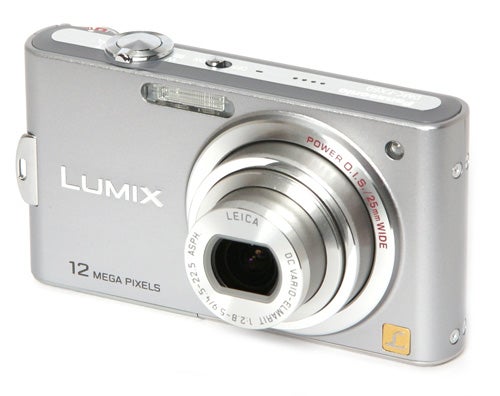
Verdict
Key Specifications
- Review Price: £244.00
The Panasonic Lumix DMC-FX60, which will be going on sale later this month, is the product of long evolutionary process of small changes and upgrades. The basic design dates back to the Lumix DMC-FX1, launched in 2003. That was before I started working for TR, but I did review the Lumic FX3 in 2006. If you compare that review with the product shots on this page you’ll see at once that the basic design of the FX series hasn’t changed all that much. It has been slowly refined over several generations, with models such as the FX33, FX35 and FX37, as well as the FX40 launched earlier this year, all bearing a strong family resemblance despite the continual improvement in specification. Details such as the position of the main controls, the flash and the AF assist lamp, even the row of four holes over the speaker in the top panel, have all remained pretty much unchanged since the first model in the series.
This policy of incremental upgrades is no more apparent than when comparing the FX60 with its immediate predecessor the FX40. The two cameras are virtually identical, both featuring a 12.1 megapixel CCD sensor, a 5x zoom f/2.8-5.9 lens with a focal length range of 25-125mm, and a 2.7-inch 230k LCD monitor, housed in identical all0aluminium bodies. They both feature 1280 x 720 HD video recording with component video output, and a range of other advanced automatic features grouped under the Intelligent Auto setting, all driven by Panasonic’s high performance Venus Engine V processor.
In fact the FX60 only offers two significant improvements over the older model. It features Panasonic’s improved Optical Image Stabilisation system, dubbed Power OIS, and also an improved autofocus system which Panasonic claims is twice as fast as the FX40. While these are certainly worthwhile additions to an already very competent camera, and will no doubt tempt new customers, existing owners of the FX 40 or FX37 will have to ask themselves if it’s enough to justify upgrading.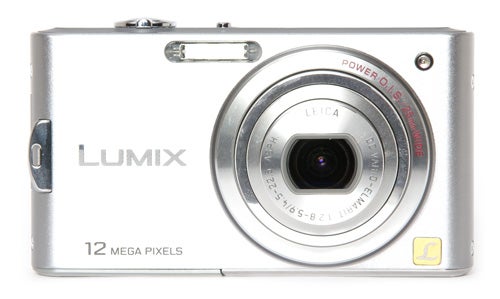
The Lumix FX60 is operating in a very competitive area of the camera market. There are quite a few advanced wide-angle compacts available at the moment, including the Canon IXUS 110 IS (£210), the Nikon CoolPix S620 (£195), the Sony Cyber-shot W290 (£185), and the new the Samsung IT100 (£170). By comparison the FX60’s £244 price looks a bit high, especially considering that the FX40 is still around the same price.
The body design of the FX60 is clean and simple, with a slightly art-deco retro look to it. It’s a well-tested design, but there are a few things I would have like to have seen addressed with this update. For a start the round-ended shape may look nice but it is hard to grip securely, especially if your fingers are wet. The strap lug has been moved to the front of the body to provide some finger grip, and there is a small textured area on the back to provide purchase for the thumb, but these don’t really help much. A slight re-shaping of the body to improve ergonomics wouldn’t go amiss.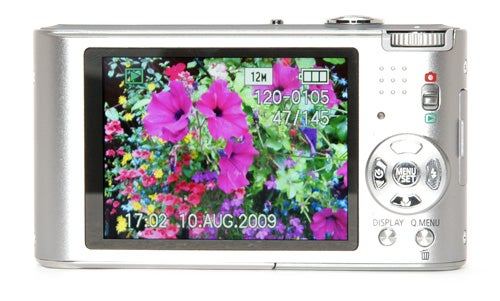
There are a couple of other design details that stand out as minor annoyances. I’ve never been keen on the partly-enclosed mode dial common to several Panasonic compacts including the FX series, since it’s impossible to see all of the options at once and their relative positions. The camera only has four modes anyway (not counting the utterly superfluous “clipboard” mode) so does it really need a dial at all?
Another slightly anachronistic feature is the slider switch used to select between shooting and playback mode. With most other compacts, if you’re reviewing your pictures on the monitor and something catches your eye, simply touching the shutter button puts the camera instantly back into shooting mode so you’re less likely to miss that spur-of-the-moment shot. With the FX60 you have to physically move the switch before resuming shooting, which is a lot slower.
That’s enough nit-picking though; let’s take a look at the improvements. The new Power OIS system is certainly impressive, but then Panasonic’s image stabilisation technology has always been among the best on the market. I found I was able to take acceptably shake-free shots at the maximum zoom setting, at shutter speeds as slow as 1/5th of a second, which is certainly the most effective I.S. performance I’ve seen from a compact camera. In fact shooting in low light in iAuto mode with the flash off, the camera’s programming seems to adjust the ISO setting to produce a shutter speed of 1/5th sec., apparently confident in its own ability to deliver a shake-free shot.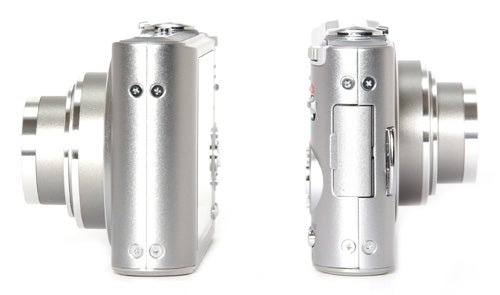
The improved autofocus system is less immediately impressive. Panasonic’s AF has always been pretty good, although it’s never really been in the same league as Canon’s or Casio’s lightning-fast focusing. The FX60’s improved AF is certainly much faster than previous models, and has greatly improved low light performance, but even with this improvement it is still barely a match for the tiny £150 Casio EX-S12, or any of the recent models in Canon’s Digital IXUS range.
The FX60’s overall performance is generally good, but not amazingly so. It starts up in a bit under three seconds, which is about average for a camera of this type, and in single shot mode it has a shot-to-shot time of around 1.9 seconds, which is reasonably quick. It could be faster, but the FX60 has an annoying trait that if you press the shutter button too soon after taking the previous shot, it doesn’t register and won’t take a picture, which causes frustrating delays when you’re trying to shoot quickly. 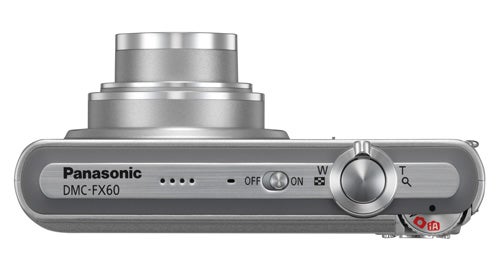
Surprisingly for a camera in this price bracket the FX60 doesn’t have a proper continuous shooting mode. The closest it comes is a limited burst mode, which takes three pictures in just over two seconds in fine quality mode, or five shots in just under four seconds in basic quality mode.
The FX60 scores well for image quality. The excellent Leica-branded lens produces superb edge-to-edge sharpness with no sign of chromatic aberration and only a minimum of barrel distortion despite its ultra-wide 25mm short end setting.
The sharp lens lets the sensor record a lot of fine detail, and the extremely low file compression in fine quality mode really makes the most of it. File sizes average around 6MB, much larger than most other 12MP compact cameras.
Exposure metering is very accurate in most lighting conditions, and copes well with backlighting and other unusual situations. Dynamic range is about average for a 12MP 1/2.3-inch sensor, in other words not brilliant even with the Intelligent Exposure mode switched on. Nonetheless colour rendition is very good, with detail even in bright highlights.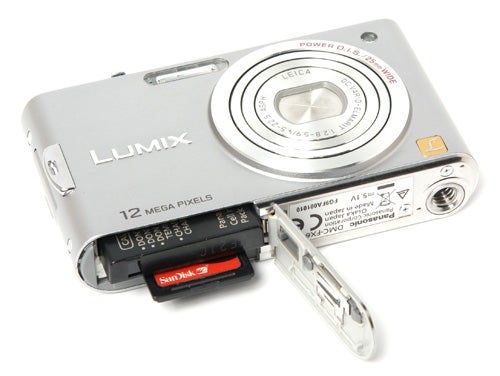
Image noise is always going to be an issue with 12MP compacts, and although the FX60 fares better than some rivals, it still has problems. Noise is very visible at 400 ISO, with detail lost to noise reduction and uneven tonal gradients especially in the red channel. 800 ISO is worse, but even at the 1600 ISO maximum the overall colour balance remains consistent and the pictures could be used for small prints or web sharing.
”’Verdict”’
The Panasonic Lumix DMC-FX60 is a good quality camera with a lot of effective and reliable automatic features. Build quality is excellent, performance is good and image quality certainly better than average. However it is very expensive compared other similarly-specified rivals, and the six-year-old body design is starting to look a bit stale.
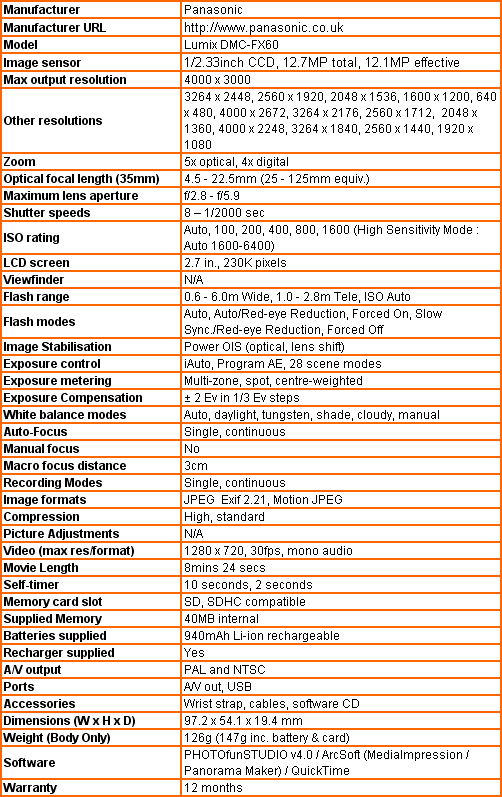
”Over the next few pages we show a range of test shots. On this page the full size image at the minimum and maximum ISO settings have been reduced to let you see the full image, and a series of full resolution crops have taken from original images at a range of ISO settings to show the overall image quality. These pictures were taken indoors using reflected natural light. ”
—-

This is the full frame at 80 ISO.
—-
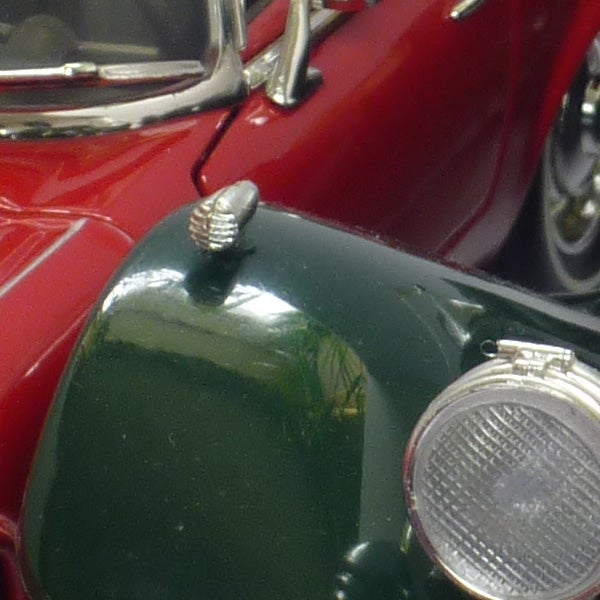
At minimum ISO there is no problem, with smooth colours and plenty of detail/
—-
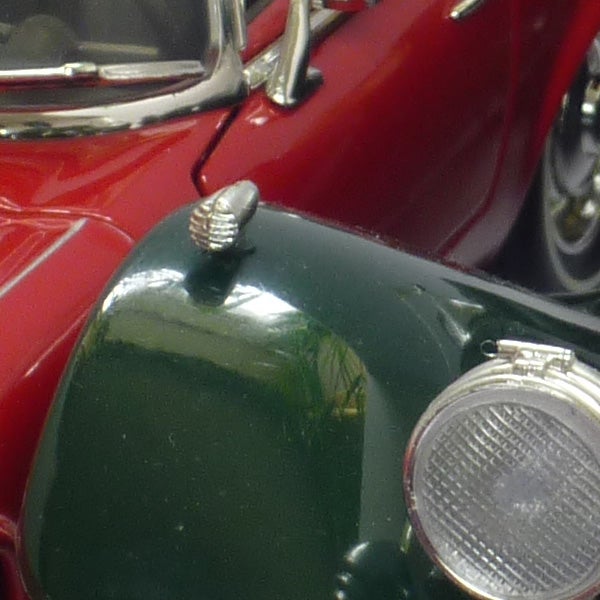
Much the same result at 100 ISO.
—-
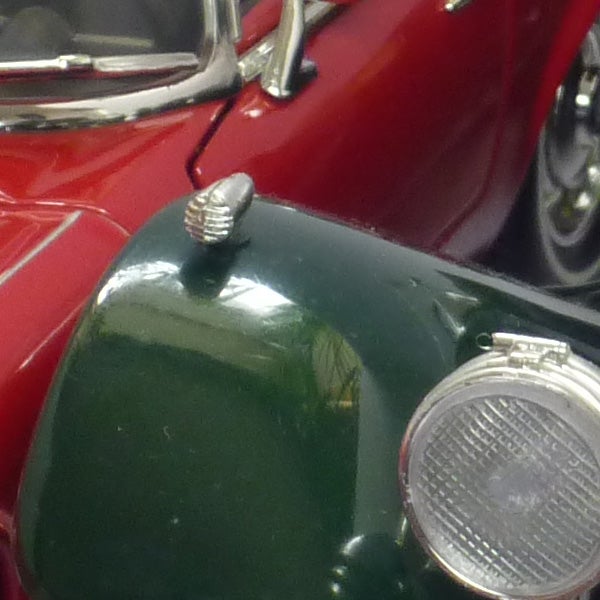
Still good at 200 ISO, but there is some noise and detail loss in the darker areas.
—-
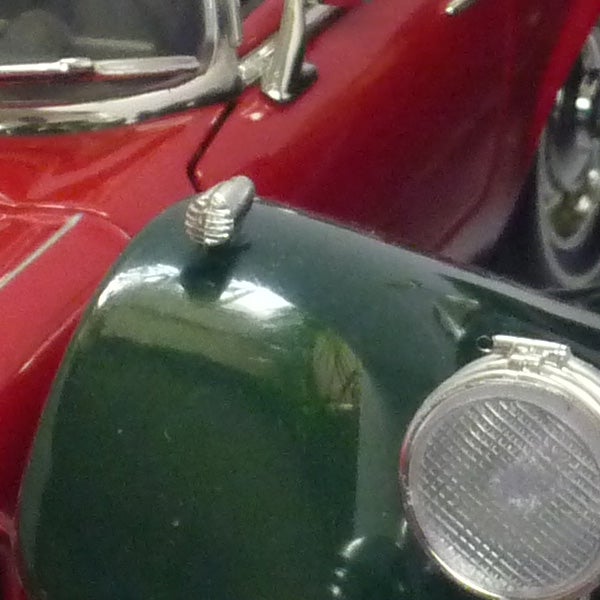
At 400 ISO noise is very visible, and the smoothness of the colour gradients is starting to break up.
—-

Much more detail has been lost at 800 ISO.
—-

Colour rendition is very patchy at 1600 ISO, but still good enough for very small prints or web use.
—-

This is the full frame at 1600 ISO.
—-
”A range of general test shots are shown over the next two pages. In some cases, the full size image has been reduced for bandwidth purposes, and a crop taken from the original full resolution image has been placed below it to show the overall image quality. Some other pictures may be clicked to view the original full-size image. ”
—-
Here’s the usual detail test shot of the West Window of Exeter Cathedral, for you to compare with other cameras. See below for a full res crop, or click to see the whole picture.
—-

The level of detail is actually pretty good; the slight haziness is due to rain. I’ll try and update with a better shot on Monday.
—-

Despite the ultra-wide 25mm lens barrel distortion is kept to a minimum.
—-

Centre sharpness is very good…
—-

…and corner sharpness is outstanding, far better than most compact cameras.
—-
”Here are some general test shots to help evaluate the camera’s overall image quality, including dynamic range, colour rendition and the zoom range of the lens. Some pictures may be clicked to download the full size original image. ”
—-

The wide angle end is equivalent to 25mm, wider than most other compacts and great for panoramic shots.
—-

The telephoto end of the 5x zoom is equivalent to 125mm
—-

The zoom macro mode produces good results.
—-

The faster AF system is good for quick spur-of-the-moment shots.
—-

Colour rendition is good, with detail even in the brighter colours.
—-

The Film Grain scene mode uses the 1600 ISO and high-contrast monochrome to good effect.
—-
Trusted Score
Score in detail
-
Value 7
-
Image Quality 8
-
Build Quality 9
Features
| Camera type | Digital Compact |
| Megapixels (Megapixel) | 12.1 Megapixel |
| Optical Zoom (Times) | 5x |

